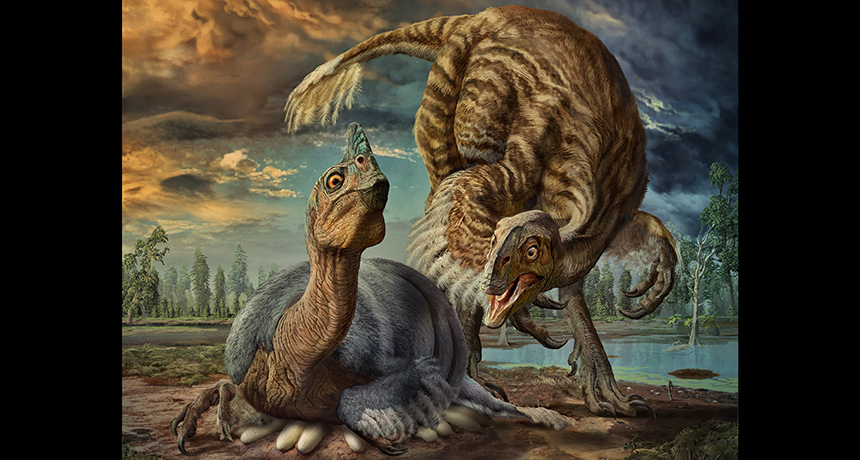‘Baby Louie’ dinosaur identified as a new species

A fossil dinosaur embryo known as “Baby Louie” has a new name. It belongs to a newly identified species of dinosaur called Beibeilong sinensis, researchers report May 9 in Nature Communications.
In the 1980s and 1990s, farmers found thousands of fossilized dinosaur eggs in the rocks of Henan Province in China and sold them overseas. It turned out that one chunk of rock, purchased by a company that sells museum-quality fossils and rock specimens, held not only eggs but also an embryonic dinosaur skeleton. It was dubbed “Baby Louie,” after a National Geographic photographer whose images of it appeared in a cover story for the magazine.
Paleontologists knew Baby Louie was some kind of oviraptorosaur, a two-legged, birdlike dinosaur. But its species was a mystery. So in 2015, Junchang Lü of the Chinese Academy of Geological Sciences in Beijing and colleagues returned to the site in China where the eggs were excavated. They analyzed fossils there and examined Baby Louie’s remains, now housed in the Henan Geological Museum. The embryo measures 38 centimeters from its snout to the start of its tail and dates to about 90 million years ago.
Based on the structure of Baby Louie’s facial bones and other anatomical features, the team declared the dinosaur a new species. In Chinese, Beibei means “baby” and long means “dragon.”
Baby Louie’s skeleton was found with six to eight similar-looking dinosaur eggs. This type of dino egg is the largest identified to date and appears to have been abundant, leading paleontologists to think that birdlike dinosaurs like Baby Louie were common in the Late Cretaceous.